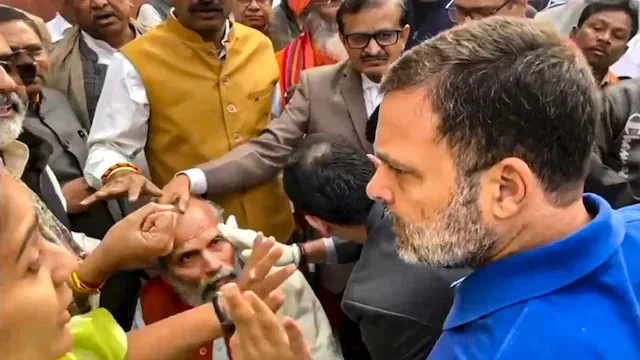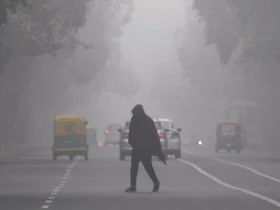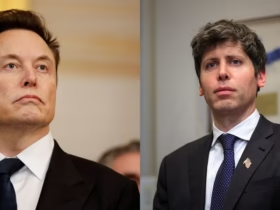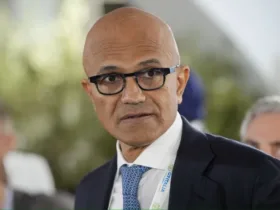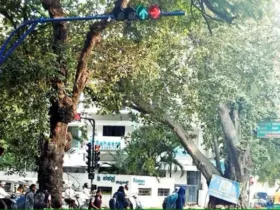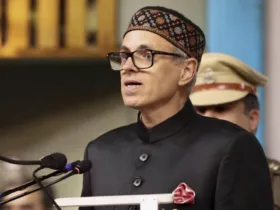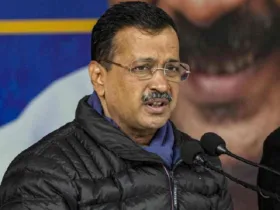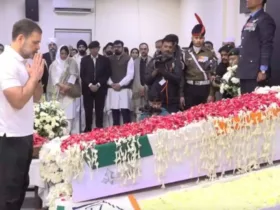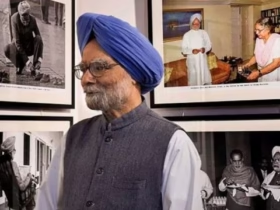On December 19, 2024, an intense altercation occurred outside the Indian Parliament during a protest, involving Congress leader Rahul Gandhi and several BJP Members of Parliament (MPs). The incident, which has garnered significant attention in the media, sparked a political firestorm, with both parties accusing each other of instigating the scuffle. Rahul Gandhi, who has been at the forefront of several protests and confrontations with the government in recent months, responded to the incident by asserting that it was the BJP MPs who had pushed him. In this detailed account, we’ll explore the background of the protest, the scuffle itself, the differing accounts of the incident, and the political fallout.
Background of the Protest
The protest outside the Indian Parliament on December 19, 2024, was part of ongoing demonstrations led by opposition parties, including the Congress, against the government’s handling of several issues. These issues included the economic situation, rising unemployment, and the handling of farmers’ protests, as well as the alleged erosion of democratic values. Rahul Gandhi, as a prominent leader of the opposition, has consistently spoken out against the government, accusing the BJP of undermining the Constitution and centralizing power.
The protest outside Parliament was aimed at drawing attention to these issues, with opposition MPs demanding a response from the ruling government. The protest was organized within the bounds of parliamentary procedures, with MPs attempting to voice their dissent peacefully. However, it quickly escalated into a physical confrontation, with accusations of violent behavior from both sides.
The Scuffle: What Happened?
The scuffle occurred as opposition MPs, led by Rahul Gandhi, were moving toward the Parliament building, presumably to make their voices heard during the proceedings. According to reports, BJP MPs, including Pratap Chandra Sarangi, were in the vicinity, and a verbal altercation quickly escalated into a physical confrontation.
BJP MP Pratap Chandra Sarangi later alleged that Rahul Gandhi had physically pushed him during the protest. Sarangi claimed that he had been injured as a result of the push, which led him to seek medical attention at the hospital. This accusation quickly made headlines, and the BJP immediately condemned Rahul Gandhi for what they perceived as violent behavior. Sarangi claimed that his forehead was injured due to the push, although video footage and eyewitness accounts from the scene did not corroborate the claim of a severe physical altercation.
Rahul Gandhi, for his part, responded to the allegations during a press briefing. He vehemently denied pushing anyone and insisted that the situation had been instigated by BJP MPs. Gandhi stated that his path was blocked by BJP MPs who had physically shoved him, and he was forced to push back in self-defense. He described the encounter as one where he was simply trying to move ahead when a group of BJP MPs had surrounded him and started pushing him.
Gandhi accused the BJP MPs of trying to intimidate him, saying, “They were pushing me, blocking my way, and even issuing threats. I didn’t initiate any physical contact. It was them who started this.” He further added that he was only trying to participate in a peaceful protest, but the BJP MPs were determined to provoke a confrontation.
Both the Congress and the BJP presented differing accounts of the incident, with each party framing the other as the aggressor. The Congress party echoed Rahul Gandhi’s claims, accusing the BJP of creating a hostile environment and attempting to provoke violence. They maintained that the BJP MPs had intentionally surrounded Gandhi and attempted to obstruct his movement.
The Political Fallout
The scuffle outside Parliament immediately became the focal point of political discussions, with both parties trading accusations and engaging in a war of words. The BJP quickly demanded an apology from Rahul Gandhi, accusing him of engaging in violent behavior toward their MPs. BJP leaders, including Home Minister Amit Shah, expressed their anger at the incident, with several MPs demanding that Rahul Gandhi be held accountable for his actions. The BJP leadership framed the scuffle as a clear example of the Congress leader’s tendency to engage in disruptive behavior.
The Congress, on the other hand, was swift in defending Rahul Gandhi’s actions. Congress spokespersons pointed out that the BJP was attempting to deflect attention from the main issues raised by the opposition, including the economic crisis and the government’s mishandling of key reforms. They accused the BJP of using the scuffle as a pretext to avoid addressing the core issues facing the country. The Congress party called the allegations against Gandhi a “diversionary tactic” and urged the BJP to focus on addressing the grievances raised by the opposition.
This incident also underscored the deeper divisions between the ruling BJP and the opposition parties. The BJP’s defense of their MPs and their demand for an apology reflected the ongoing tension between the government and the opposition, which has intensified over the past few years. Rahul Gandhi, in particular, has been a vocal critic of Prime Minister Narendra Modi and his policies, with the two leaders often clashing in Parliament.
The Role of the Media and Public Opinion
The scuffle was widely covered by the media, with many outlets reporting on the conflicting accounts of the incident. Video footage of the protest was circulated on social media, and several news channels aired interviews with eyewitnesses who were present at the scene. While there was no clear consensus on who initiated the physical altercation, the incident sparked intense public debate.
The scuffle and the surrounding controversy also highlighted the polarized nature of Indian politics. Supporters of the Congress party rallied behind Rahul Gandhi, condemning the BJP for allegedly provoking violence, while BJP supporters used the incident to portray Gandhi as a disruptive and aggressive politician. The media coverage of the incident fueled further division, with each side seeking to control the narrative.
The Larger Context: Political Tensions Between Congress and BJP
The December 19 scuffle is part of a larger pattern of political tension between the Congress and the BJP. Over the past several years, both parties have engaged in increasingly bitter confrontations in Parliament, with physical altercations becoming more common. Rahul Gandhi has been at the forefront of the opposition’s challenge to the BJP, and his criticism of the government has often led to clashes in Parliament. In the past, Congress MPs have been accused of disrupting proceedings, while the BJP has been accused of using its majority to stifle dissent.
The incident outside Parliament can also be viewed within the context of the growing unrest and dissatisfaction among various sections of Indian society. The opposition, led by leaders like Rahul Gandhi, has been vocal in highlighting the government’s failures on key issues such as economic inequality, unemployment, and farmers’ rights. At the same time, the BJP has faced criticism for its authoritarian style of governance and its handling of protests and dissent.
Conclusion: Escalating Political Hostilities
The scuffle outside Parliament between Rahul Gandhi and BJP MPs represents just one episode in the increasingly hostile political climate in India. While both sides have provided differing accounts of the incident, the political fallout has only intensified the already bitter rivalry between the Congress and BJP. Rahul Gandhi’s claim that he was pushed by BJP MPs, and the BJP’s demand for an apology, reflect the deep divisions within Indian politics and highlight the contentious nature of contemporary parliamentary proceedings.
As the situation continues to unfold, it remains to be seen whether this incident will have a lasting impact on the relationship between the opposition and the ruling party, or if it will become yet another flashpoint in an ongoing political struggle that shows no signs of abating. With the 2024 elections looming, these tensions are likely to play a significant role in shaping the political landscape in the coming months.

